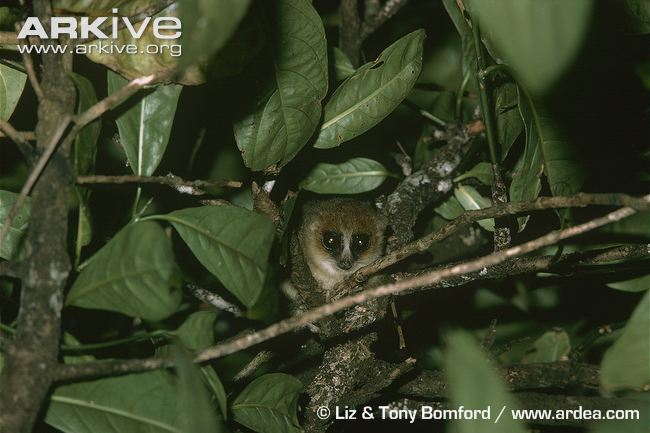Form & Function
M icrocebus
murinus are one of today’s smallest known primates.
Characteristics they are known for include their short limbs,
large eyes, and grayish-brown fur. The tails of Microcebus
murinus are on average about 14 centimeters long, while the body
length is slighty shorter at an average 13
centimeters long and their weight is about 1 to 4 ounces.
Microcebus are omnivorous, which means they consume both plants
and other animals. The diets of
Microcebus murinus consist of a variety of foods such as small
vertebrates, fruit, flowers, nectar, leaves, and buds. Because
their incisors and canines are long and thin, Microcebus murinus
able to use their teeth to groom
themselves and each other (Encyclopedia of Life 2014).
icrocebus
murinus are one of today’s smallest known primates.
Characteristics they are known for include their short limbs,
large eyes, and grayish-brown fur. The tails of Microcebus
murinus are on average about 14 centimeters long, while the body
length is slighty shorter at an average 13
centimeters long and their weight is about 1 to 4 ounces.
Microcebus are omnivorous, which means they consume both plants
and other animals. The diets of
Microcebus murinus consist of a variety of foods such as small
vertebrates, fruit, flowers, nectar, leaves, and buds. Because
their incisors and canines are long and thin, Microcebus murinus
able to use their teeth to groom
themselves and each other (Encyclopedia of Life 2014).
During the gray mouse lemurs' breeding season, their metabolic
rates are increased. To keep up with increased metabolic demands,
Microcebus murinus have adapted to nesting in groups to conserve
energy expended on creating heat to maintain body temperature.
When two Microcebus murinus nest together, there is a
significant increase in energy conservation. When three
Microcebus murinus nest together, maximum energy conservation
can be achieved. During the nonbreeding season metabolic rate is
lower, therefore maximum energy conservation can be achieved
with just two gray mouse lemurs nesting together. The advantage
to this adaptation is that it can also be utilized to conserve
energy under conditions of food shortages
(Perret 1998).
 Another
important adaptation of gray mouse lemurs is their sharp eyesight.
Many primates have high visual acuity, which means their vision is
sharp. Of all primates, Microcebus murinus have the
smallest axial eye diameter (Ross, et al. 2007). Due to such a
small axial eye diameter, Microcebus murinus do not have a
wide field of vision, but they can focus very well on small and
distant objects. This adaptation was likely derived under the
circumstances that nocturnal lemurs need to focus in low light
conditions while they search for food at night. Visual acuity is
higher in Microcebus murinus than in any other mammal
species, making them masterly nocturnal creatures (Veilleux, et
al. 2009)
Another
important adaptation of gray mouse lemurs is their sharp eyesight.
Many primates have high visual acuity, which means their vision is
sharp. Of all primates, Microcebus murinus have the
smallest axial eye diameter (Ross, et al. 2007). Due to such a
small axial eye diameter, Microcebus murinus do not have a
wide field of vision, but they can focus very well on small and
distant objects. This adaptation was likely derived under the
circumstances that nocturnal lemurs need to focus in low light
conditions while they search for food at night. Visual acuity is
higher in Microcebus murinus than in any other mammal
species, making them masterly nocturnal creatures (Veilleux, et
al. 2009)
To keep exploring, click here!
Or click here to go back to the Home page.